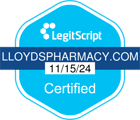Jump to section
Toxic shock syndrome
Approved by our Clinical team | Apr 7, 2020

What is toxic shock syndrome?
expand_moreToxic shock syndrome (TSS) is an extremely rare condition however when it does occur it can be life threatening if not treated early enough. TSS is caused by Staphylococcus or Streptococcus bacteria getting into the body and releasing toxins. These bacteria usually live on your skin, nose and mouth and are harmless, it is only when they get deeper inside your body that they release their toxins. These dangerous toxins can damage tissue and stop your organs from working.
What causes Toxic shock syndrome?
expand_moreYour risk of developing toxic shock syndrome can be increased by:
- Tampons – If you leave your tampon in for longer than recommended or use ‘super- absorbent’ tampons so that you don’t have to change them as often
- Female barrier contraception – Using a contraceptive diaphragm or cap, always remember to clean and store them as instructed when you’re not using them
- Wounds – bacteria can enter your skin via a cut, burn, boil, insect bite or a surgical wound
- Childbirth – bacteria can enter your body during or after you have given birth
What are the symptoms of toxic shock syndrome?
expand_moreToxic shock syndrome gets worse very quickly and can be fatal if your symptoms are not treated fast enough. Most people will make a full recovery if they are diagnosed and treated early on.
Symptoms can include:
- A high temperature
- Nausea
- Vomiting
- Headache
- Chills
- Muscles aches
- Sore throat
- Diarrhoea
- A wide spread rash
- Dizziness
- Fainting
- Confusion
- Drowsiness
- Coughing
- Breathing difficulties
- Your lips, tongue and whites of the eyes turning a bright red
If the infection has gotten into your body through a wound the cut could look infected, it could feel hot to the touch and painful.
Toxic shock syndrome is a medical emergency. Although these symptoms could be due to another illness, for example if you have a cold or the flu, it is important that you do not ignore them, especially if you have a combination of symptoms. You should contact your GP, your local out of hours service or call NHS 111 as soon as possible. They’ll be able to check your symptoms and decide if you require emergency treatment.
How can I prevent toxic shock syndrome?
expand_moreIf you have a cut or burn you’ll need to treat this quickly to reduce your risk of infection, if you think it is infected get medical advice as soon as possible. If you are using female barrier contraceptives always follow the instructions and leave them in for the recommended time.
If you’re using tampons you can prevent TSS by:
- Use tampons with the lowest absorbency that are suitable for your menstrual flow
- Alternate between tampons and sanitary towels during your period
- Change your tampons regular, or as directed to on the pack
- Only use one tampon at a time
- If you use them during the night, insert a new tampon before you go to bed and remove it straight after you wake up
- Remove a tampon when your period ends
Why do tampons cause toxic shock syndrome?
expand_moreLeaving in a tampon for too long can cause lead to infections, typically tampons can be left in for a maximum of eight hours. The bacteria that causes toxic shock syndrome can enter your body on your tampon or your hands, so always remember to wash your hands thoroughly when inserting and removing a tampon.
Depending on your menstrual flow you may wish to change them more regularly. If you leave your tampon on overnight you should also insert a new one in the morning, and you might want to swap to sanitary towels throughout your period.
Is toxic shock syndrome contagious?
expand_moreToxic shock syndrome is not contagious and cannot be passed from person to person.
Is it possible to get TSS more than once?
expand_moreYes, even if you have been treated for it in the past you can develop toxic shock syndrome again.







